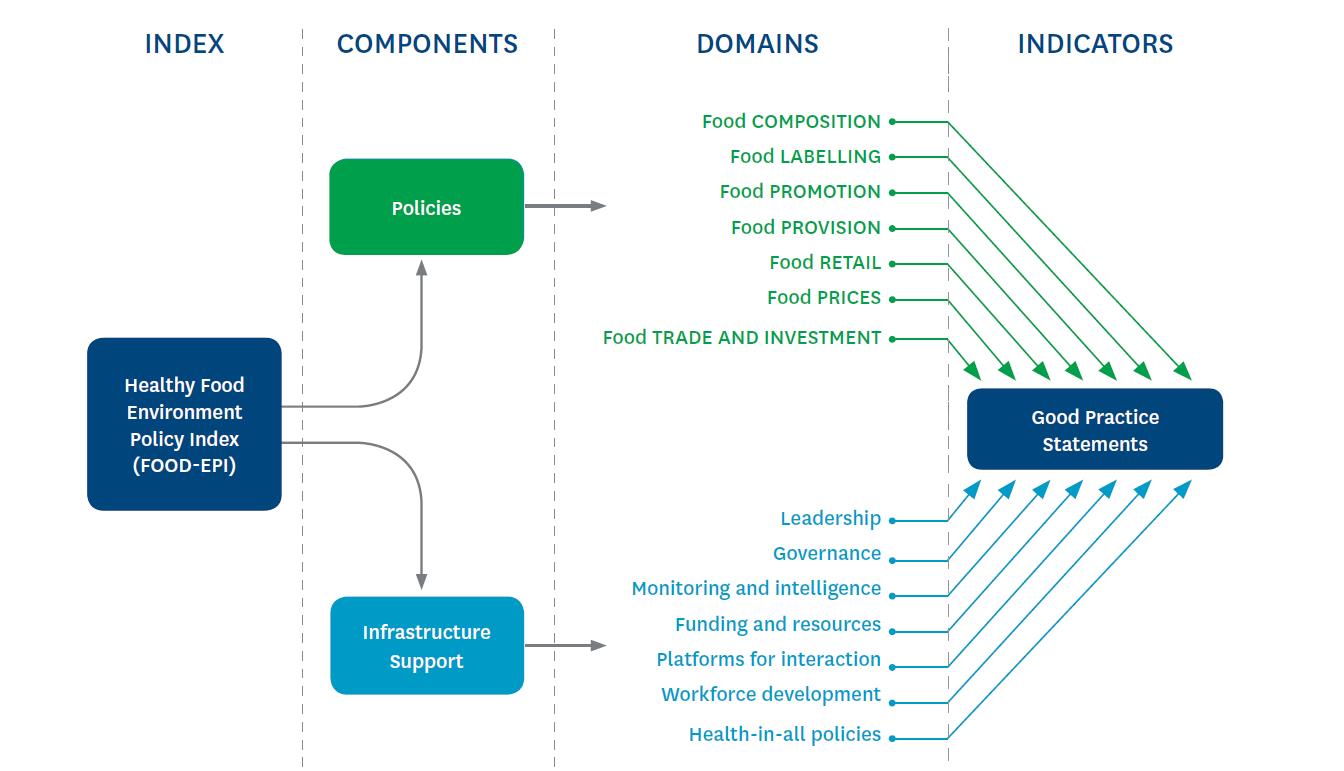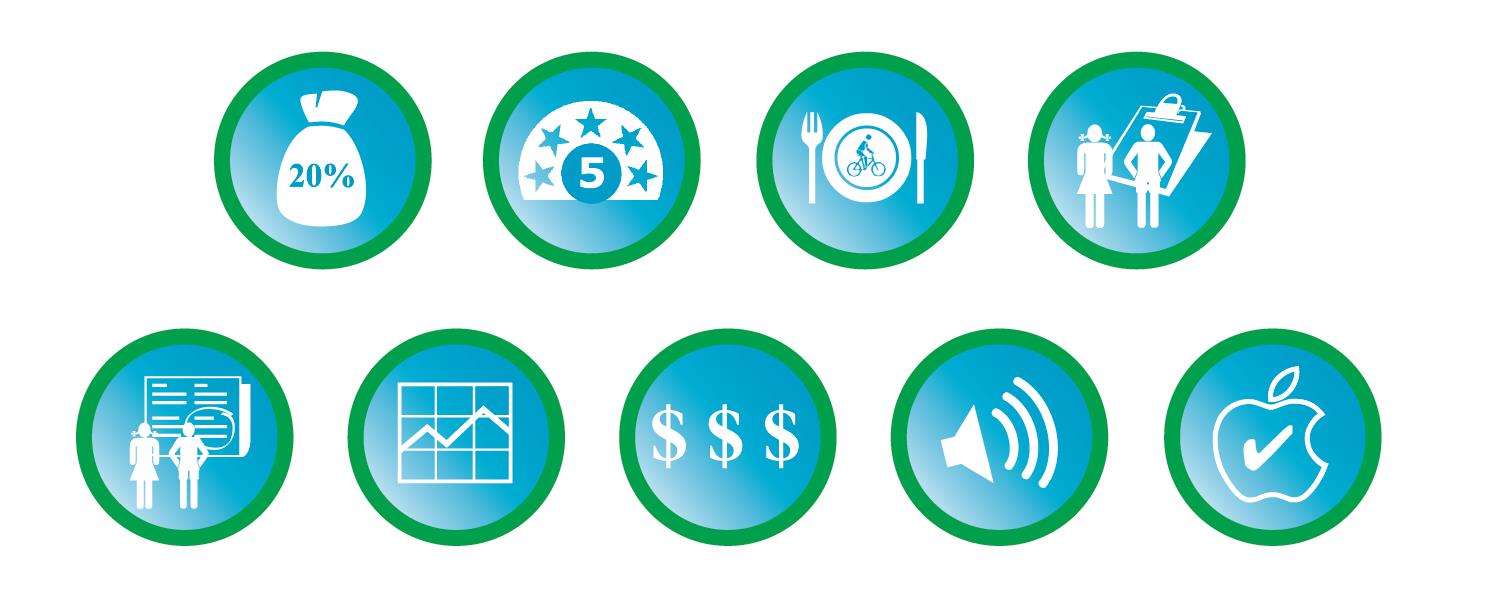Dr Stefanie Vandevijvere, Professor Boyd Swinburn
A panel of 71 independent and government experts have undertaken an evaluation of New Zealand Government food environment policies, compared to international best practice. This is the second such evaluation, the first being in 2014. In this blog we summarise the findings. There are some areas where New Zealand is at the level of best practice and there are some areas where there is progress compared to 2014. However, there remain major implementation gaps, especially for policies to improve the healthiness of food environments, to catch up with other nations globally in tackling the child obesity crisis.
According to a 2017 OCED Report New Zealand is still the third fattest high income country both for children and adults (1), which means no progress since 2014 (2). It is critical that the New Zealand Government starts implementing widely recommended preventive policies (3, 4) to match the magnitude of the burden that unhealthy diets are creating. While some progress has been made in policy implementation since 2014, overall, New Zealand is significantly behind international best practice for implementing such policies. This is the main conclusion from the second Healthy Food Environment Policy Index (Food-Epi) (5) conducted in New Zealand in April-May 2017.
The Food-EPI as a rigorous tool and process to measure implementation gaps and identify priority actions to tackle child obesity
The Food-EPI followed a rigorous, evidence-based process to determine the extent of implementation of food environment policies by the NZ Government compared to international best practice:
- The Food-EPI has been developed based on a review of evidence and international policy documents and been revised by a group of international experts, including experts from low, middle and high income countries as well as senior representatives from the World Health Organization (WHO) and the Food and Agriculture Organisation (FAO)(6). The tool and process have also been pilot tested (7) before implementation.
- A 100 page comprehensive evidence document on the current extent of implementation of 47 good practice policies and infrastructure support in New Zealand was compiled and checked for completeness and accuracy by government experts (5), as occurred in 2014 (8).
- Based on the evidence document and international best practice exemplars, an expert panel of 71 independent (n=48) and government (n=23) experts rated the level of implementation for each of the 47 good practice policies and infrastructure support indicators compared to international best practice using an online rating tool. Inter-rater reliability was good (Gwet AC2 > 0.8) and there were no differences in ratings between independent and government experts. This is interesting as in Thailand, government experts rated government performance higher than independent experts (9).
- Four workshops were organized with experts across the country to look at the implementation gaps and propose and prioritize concrete actions for implementation by the Government. There were 53 common recommendations proposed across the workshops which were prioritized by both their importance and likely achievability.
Figure 1: Healthy food environment policy index (Food-Epi)(5)
Key highlights from the 2017 Food-EPI
About half of all the indicators on the Food-EPI dashboard were rated as having ‘low’ or ‘very little, if any’ implementation in New Zealand compared to international best practice, a small decrease since 2014 when 60% of indicators were rated as having ‘low’ or ‘very little, if any’ implementation (8). Examples of indicators rated ‘low’ or ‘very little, if any’ include:
Policies
- Increasing taxes on unhealthy foods
- Restricting unhealthy food promotion to children
- Healthy food policies in schools
Infrastructure support
- Set population intake targets
- Assess public health impacts of food and non-food policies
- Provide sufficient funding for population nutrition promotion
Interestingly, implementation is much worse for the policy indicators (2/3 of indicators rated as having ‘low’ or ‘very little if any’ implementation) than for the infrastructure support indicators (1/3 of indicators rated as having ‘low’ or ‘very little if any’ implementation). Australia is doing better for several key policy indicators as Australia was rated at the level of best practice for leaving GST off fruit and vegetables and implementing evidence-based food-based dietary guidelines. Another area where Australia is doing better than New Zealand is school food policies with several of the states having implemented mandatory nutrition standards in schools (10).
NZ doing well at the level of best practice for:
- preventing unhealthy foods carrying health claims
- providing nutrition information panels on packaged foods
- transparency in policy development processes
- providing access to information for the public and monitoring prevalence of NCDs and their risk factors and inequalities
The expert panel recognized progress since 2014 for:
- implementation of the Health Star Ratings
- initiating systems-based approaches with communities (e.g. Healthy Families, Healthy Auckland Together)
- developing the Healthy Food and Drink Policy for the public sector
- improving platforms for interaction between Government and other sectors and across Government
As a result of the evaluation, experts derived nine priority recommendations.
Nine priority recommendations for the New Zealand Government to fill the major implementation gaps:
1. Strengthen the Childhood Obesity Plan, including policy objectives and targets to reduce obesity prevalence and inequalities, and more and stronger policies to create healthy children’s food environments, and increasing funding for the implementation and evaluation of the plan.
2. Set targets for
a. reducing childhood overweight and obesity by 8 percentage-points (from one-third to one-quarter) by 2025 with decreasing inequalities (11).
b. reducing mean population intakes of salt, sugar & saturated fat based on World Health Organization recommendations.
c. voluntary reformulation by food industry of composition (salt, sugar & saturated fat) in key processed food groups that are major contributors to sodium and sugar intakes, consistent with international best practice targets.
3. Increase funding for population nutrition promotion to at least 10% of obesity/overweight health care costs (i.e. about $90 million per annum).
4. Regulate unhealthy food marketing, as defined by the WHO nutrient profiling model, to children up to 18 years:
a. in broadcast media, including during children’s peak viewing times (e.g. up to 9pm)
b. in non-broadcast media, including food packaging, sport sponsorship and social media
c. in children’s settings, including ‘school food zones’.
5. Ensure healthy foods in schools and early childhood education services using the updated Food and Beverage Classification System.
6. Introduce a substantial (e.g. 20%) tax on sugar-sweetened beverages and explore using the revenue for programs to improve public health and wellbeing (see recent blog on mechanisms).
7. Strengthen the Health Star Rating System by urgently addressing anomalies in the design algorithm (especially for sugar), increasing funding for promotion and making it mandatory for packaged foods if there is not widespread uptake by 2019.
8. Implement the new Eating and Activity guidelines by increasing funding for their promotion and translating them for New Zealand’s social, environmental and cultural contexts.
9. Conduct a new national nutrition survey for children within 3 years and institute a plan for future regular adult and children nutrition surveys.
In conclusion, there are some areas where New Zealand is at the level of best practice and there are some areas where there is progress compared to 2014. However, there remain major implementation gaps, especially for policies, still to be addressed to improve the healthiness of food environments in New Zealand and to be able to catch up with other nations globally in tackling the child obesity crisis.
Authors:
Dr Stefanie Vandevijvere
Prof Boyd Swinburn




